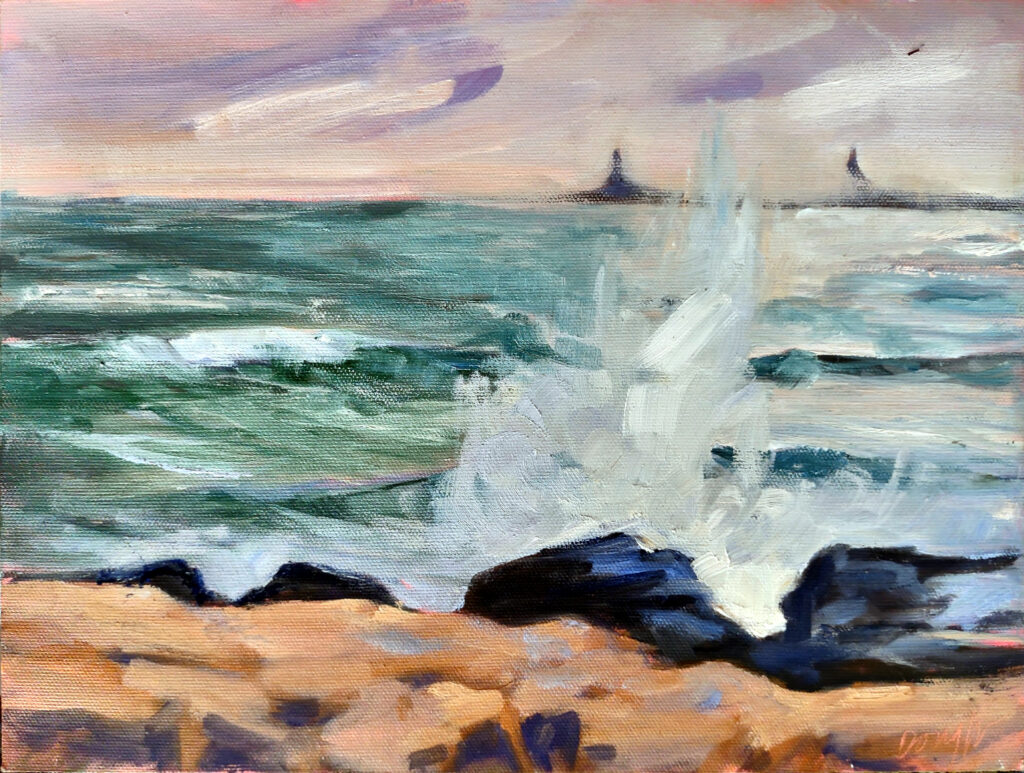I get several messages a week asking me if I’m interested in selling my paintings as NFTs. My answer is that paintings are one-off tactile objects, not digital assets. Not that the shills for NFTs like taking no for an answer, but NFTs and fine art don’t really mix.
That doesn’t mean that you can’t learn a lot by looking at paintings online. The world has been immeasurably enriched by museums opening their collections on the internet. For example, the 99% of people who will never see Rembrandt van Rijn’s The Night Watch in person can still look at it brushstroke-by-brushstroke on the Rijksmuseum website. And the digital world has had a remarkable democratizing influence on the sale and distribution of contemporary art and music.

But a digital image of a painting is never the same as the real thing. Recent research using Johannes Vermeer’s Girl with a Pearl Earring may validate this argument. Using electroencephalograms (EEG), researchers at the Mauritshuis in the Netherlands demonstrated that looking at actual paintings stimulates the brain differently than looking at reproductions. “The viewer’s emotional response is ten times stronger when they are face to face with the painting in the museum,” they reported.
Vermeer is what’s known as a linear painter, which means he focused on clarity, modeling, structure, and detail. That’s in contrast to painterliness, which means work that is less controlled, relying more on brushwork and expression. The researchers got similar results from the works of two other Dutch Golden Age painters, Rembrandt van Rijn, who is considered painterly, and Willem Van Honthorst, another linear painter. Apparently, it was the paint itself that mattered, not how it was applied.
You may recognize this composition
Researchers also reported a ‘sustained attentional loop’ unique to The Girl with the Pearl Earring. People who’ve studied composition will recognize this as a classic triangle composition, a series of focal points designed to engage the viewer. While this composition has been used throughout art history, The Girl with the Pearl Earring delivers it as a quick one-two-three punch-up—lips, eye, earring.
More questions
This was a very small study of a very narrow period in art history, but it raises interesting questions. Would similar experiments on a broader range of art and artists show us, for example, whether other periods of art fare better or worse in reproductions? Would that information help us determine whether one kind of painting is objectively better than another?
The Girl with the Pearl Earring and Mona Lisa are both superstar paintings, known by almost everyone. However, Mona Lisa is almost unviewable in real life, due to the immense crowds thronging its gallery. If similar responses were recorded at the Louvre, would that mean that part of the response to The Girl with the Pearl Earring was due to celebrity?
An aside about scams
Because my phone number and email address are on my website, I get more than my share of scammy messages. I thought I was expert at weeding through them. This week, one of my students apparently texted me, asking me to follow her new Instagram store. When the texter asked me to send back information, I checked the phone number against my records and realized it was a clone.
What shocked me was that the bot seemed to have some idea of my relationship with my student. Was that AI or a lucky guess? I don’t know, but you can never be too careful.
Reserve your spot now for a workshop in 2025:
- Advanced Plein Air Painting, Rockport, ME, July 7-11, 2025.
- Sea and Sky at Acadia National Park, August 3-8, 2025.
- Find Your Authentic Voice in Plein Air, Berkshires, MA, August 11-15, 2025.
- Immersive In-Person Fall Workshop, Rockport, ME, October 6-10, 2025.




